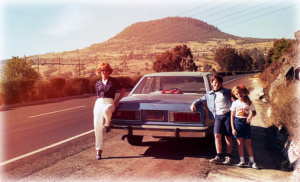Preserving Your Memories
Article by | Sara Hook,
In collaboration with 2Video
Humans have been preserving memories since the dawn of time – archaeologists have found inscriptions of life on everything from stone tablets and clay pots to painted walls in caves. And why not? We all know memories can be faulty at the best of times, and it is amazing to look back on old memories and reminisce about old times and those who are no longer with us. It is a beautiful thing to give that same opportunity to children and grandchildren.
There are many ways to preserve our memories, and our histories. Memories can keep culture alive by providing future generations a way to connect to the traditions of the past and present. Photos and videos can bring history to life – events that were just stories in school take on a whole new meaning when grandfather was involved.
When preserving those memories, it is important to think of the small things as much or even more than the big things. Big events like birthdays, weddings, and graduations are important, but it is the little, seemingly inconsequential moments that really show who the subject of the memory is. So take those pictures, and videos. Keep the diaries, and the letters. They are more precious than you could ever imagine.
These days we don’t have to carve rock or draw pictures in clay. There are a multitude of visual and auditory media available to us, and with the advances in technology many of them are only a click away. Unfortunately, those same advances cause some media to go out of date. Things like old film cameras and VHS players are getting harder and harder to find, and even developed photos look worse for wear after a time. Fortunately, there are a variety of ways to restore old photos and videos, as well as to transfer data from tape or film to a more modern format.
Greg Phelps has been the owner of the local media conversion business 2Video since 1998. Phelps said one of the biggest challenges of converting media is finding and keeping functional equipment.
Machines like old film projectors and VHS players aren’t being produced anymore, so they have to be found on eBay or in pawn shops – and even the refurbished equipment is expensive. As time goes on, that equipment will become more difficult to find. “All of those medias are basically dying,” Phelps said. “[It’s] just going to be harder and harder to get a VHS tape converted.”
With so many kinds of film, tape, and video around, it is hard to know what to do and where to go with your treasured memories. Places like Walmart and CVS no longer offer such services, and some conversions like Betamax can only be done in a few places around the world, said Phelps.
“What we had to do and we still do today is maintain all these different formats,” Phelps said. “I mean we do 16 millimeter, 8 millimeter, super 8 film – we do those transfers, and then we do just about every format there is in video world.”
While Phelps said film especially has a long shelf life – quality old fashioned film is still around from the thirties and forties – keeping old media is not without problems. “[If] it smells like ammonia and it’s all kind of crumpled up, that film has gone bad,” Phelps said, “That’s just one of the risks.”
So if you have kept those old family videos, or the pictures you saved of your older relatives, consider updating them. You and your children will love being able to see those family members again – even if it is just in video.
